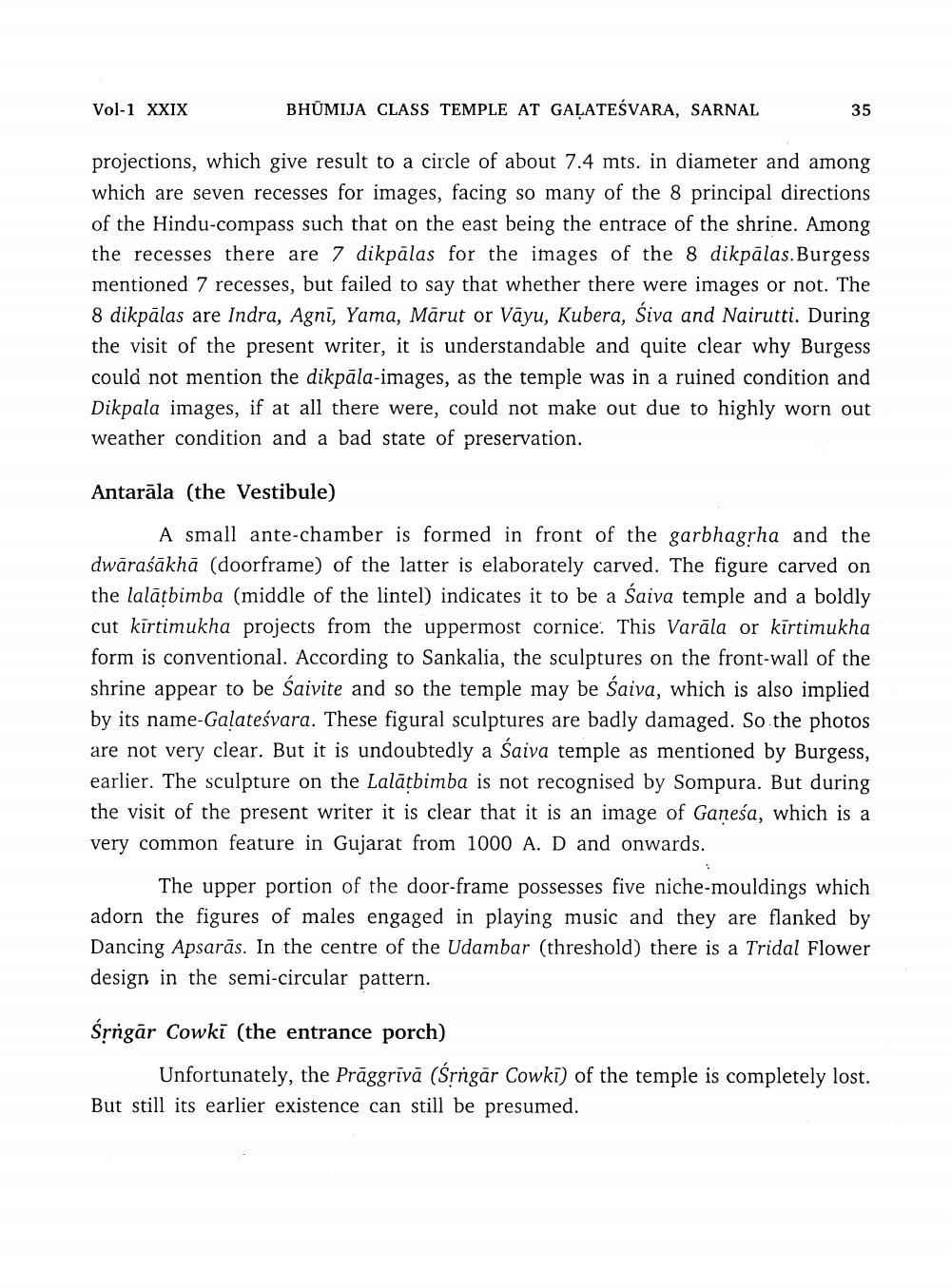________________
Vol-1 XXIX
BHŪMIJA CLASS TEMPLE AT GAĻATEŚVARA, SARNAL
35
projections, which give result to a circle of about 7.4 mts. in diameter and among which are seven recesses for images, facing so many of the 8 principal directions of the Hindu-compass such that on the east being the entrace of the shrine. Among the recesses there are 7 dikpalas for the images of the 8 dikpālas. Burgess mentioned 7 recesses, but failed to say that whether there were images or not. The 8 dikpālas are Indra, Agni, Yama, Marut or Vayu, Kubera, Siva and Nairutti. During the visit of the present writer, it is understandable and quite clear why Burgess could not mention the dikpāla-images, as the temple was in a ruined condition and Dikpala images, if at all there were, could not make out due to highly worn out weather condition and a bad state of preservation.
Antarāla (the Vestibule)
A small ante-chamber is formed in front of the garbhagrha and the dwāraśākhā (doorframe) of the latter is elaborately carved. The figure carved on the lalātbimba (middle of the lintel) indicates it to be a Saiva temple and a boldly cut kirtimukha projects from the uppermost cornice. This Varāla or kirtimukha form is conventional. According to Sankalia, the sculptures on the front-wall of the shrine appear to be Saivite and so the temple may be saiva, which is also implied by its name-Galateśvara. These figural sculptures are badly damaged. So the photos are not very clear. But it is undoubtedly a śaiva temple as mentioned by Burgess, earlier. The sculpture on the Lalātbimba is not recognised by Sompura. But during the visit of the present writer it is clear that it is an image of Ganesa, which is a very common feature in Gujarat from 1000 A. D and onwards.
The upper portion of the door-frame possesses five niche-mouldings which adorn the figures of males engaged in playing music and they are flanked by Dancing Apsarās. In the centre of the Udambar (threshold) there is a Tridal Flower design in the semi-circular pattern.
Srngār Cowki (the entrance porch)
Unfortunately, the Prāggrīvā (Srngar Cowki) of the temple is completely lost. But still its earlier existence can still be presumed.




